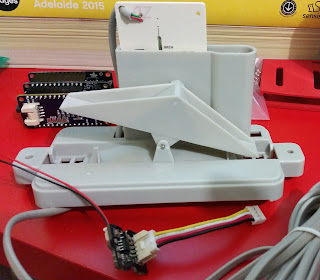 |
| Arrving in Lamu on Flight 540 |
After about a week in Nairobi, Gichini and I decided to take a trip to Lamu to do get some R&R.
Fly540 goes to Lamu almost every day and tickets are only about $100, the accommodation is cheap as well since the decline in the tourist trade due to the al shabab terrorist threat and
abduction of westerners.As the article says Lamu is indeed a slice of paradise. Beautiful beaches, relaxed people and great food. I will try to keep this post low on words and let the pictures tell a story.
 |
| The Rasta men of Lamu |
A lot of the people are ocean people. Fishing or transporting people in fibre glass boats with outboard motors or old school sailing dhows, a lot of which are made in Mozambique. One particular dhow was decked out with flags from multiple countries and had rastamen crewing it.
 |
| The beached dhow (made in Mozambique), prepping for a trip to Zanzibar |
One of the downsides of the low tourist business is that we got approached by everybody who had something to sell. It made things affordable, but sometimes we overdid things a bit. On our walk from the airport ferry to the accommodation in
Shela beach we met a guy who offered us fresh oysters. So we ended up with 4 dozen oysters for breakfast. The food overall was great, especially the fruits and seafood.
 |
| Oysters for breakfast |
I took a day for a guided tour around Lamu old town. It has distinct Arab, Indian, Portuguese, Swahili sections. There are of course some modern areas as well. Building on an island is hard work, getting materials in and putting it together. A lot of the buildings are very old with marvellous hand crafted doors.
 |
| Old Wells |
 |
| The Central Square |
Some new buildings have replicated the old glamour and look like a set from a Medieval show (I am looking at you
Game of Thrones).
 |
| New doors of old Lamu |
The ocean seems to have crawled up and taken residence in the walls. Coral reefs have left their stamp.
 |
| Details in the coral lined walls |
I took a day trip to a settlement from the 1500's with old walls and a secluded beach. Passed people from the Luo village quarrying limestone and coral by hand on the way.
 |
| Making charcoal the old school way |
 |
| Quarrying for limestone |
On the last day we took the boat back to the airport with friends we made on Shela beach. A glorious few days in an island paradise.I think I will go back as soon as I can.
 |
| On the boat back to the airport with Shay and Gichini |
 |
| Beautiful isolated beaches on the Indian Ocean |



















































